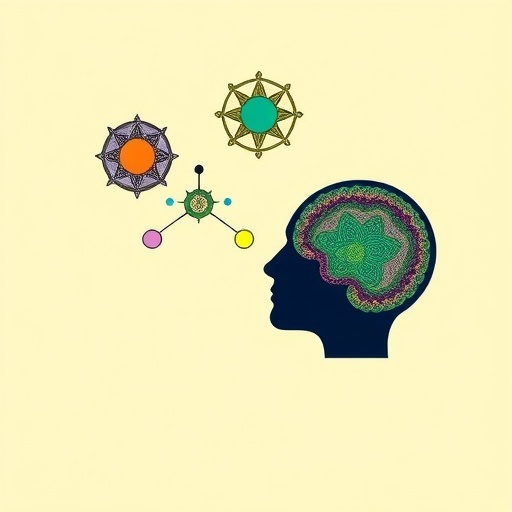In recent years, the renaissance of psychedelic substances in the realm of mainstream medicine has sparked extensive interest among researchers and clinicians alike. These compounds, once relegated to the fringes of scientific inquiry and social acceptability, are now being re-examined under rigorous clinical conditions for their therapeutic potential. Initial findings have positioned psychedelic-assisted therapy as a promising avenue for treating a range of mental health disorders, including depression, anxiety, and post-traumatic stress disorder (PTSD). Despite these advances, the full spectrum of psychedelic effects remains complex, with particular concern surrounding the adverse side-effect profiles that are not yet completely understood. Central among these concerns is the potential for psychedelics to induce latent psychotic symptoms or persistent sensory disturbances, notably Hallucinogen Persisting Perception Disorder (HPPD).
HPPD is characterized by prolonged visual distortions such as intensified colors, trailing images, halos, and afterimages that persist long after the acute effects of the drug have worn off. Although relatively rare, these persistent perceptual changes can have a profound impact on quality of life, and their underlying etiology remains elusive. To illuminate this area, a research team led by Katie Zhou undertook a comprehensive online survey, collecting data from 654 individuals who intended to engage in psychedelic experiences voluntarily. This methodological choice allowed direct access to individuals in naturalistic settings, bypassing the artificial constraints of clinical trials.
The cohort was predominantly male (74%) and highly educated, with 77% having completed university-level studies. Notably, approximately one-third of participants reported a clinical diagnosis of at least one psychiatric condition, encompassing a broad spectrum of mental health challenges. This heterogeneity is critical, as underlying psychiatric vulnerabilities may interplay with psychedelic use to modulate both therapeutic outcomes and adverse effects. The investigators conducted follow-up assessments at two and four weeks post-psychedelic use, resurveying 315 and 212 participants, respectively. This longitudinal design enabled the team to track the evolution of perceptual and cognitive symptoms over time, offering insights into both transient and persistent alterations.
Data analysis revealed an intriguing relationship between lifetime psychedelic usage and certain psychological traits traditionally associated with schizotypy, including delusional ideation and magical thinking. Importantly, these correlations were weak, and the most striking finding was a small but statistically significant reduction in delusional ideation one month after psychedelic use. This counters prevailing notions that psychedelic substances inherently exacerbate psychosis-like symptoms and supports the theoretical framework that these experiences do not causally induce schizotypal traits. Instead, pre-existing personality and psychological factors likely play more decisive roles.
Despite the encouraging findings regarding thought disturbance, sensory anomalies consistent with HPPD were reported by about one-third of respondents at the one-month follow-up. These experiences predominantly involved heightened color saturation and prolonged afterimages—phenomena that, while noticeable, were not distressing for most affected individuals. This distinction between symptom presence and subjective distress underscores the necessity of nuanced clinical assessment when evaluating psychedelic-induced phenomena. Furthermore, the severity and impact of HPPD symptoms may range considerably, necessitating individualized consideration.
One of the pivotal contributions of the study was the identification of strong predictors associated with persistent visual phenomena. The personality trait “absorption,” defined as the propensity to become deeply engaged in sensory or imaginative experiences, emerged as a significant factor. Participants with higher absorption scores were more likely to report ongoing perceptual alterations. Additionally, younger age was linked to an increased likelihood of experiencing HPPD symptoms. This aligns with prior epidemiological research suggesting that adolescents and young adults possess neurodevelopmental susceptibilities that may predispose them to prolonged sensory disruptions following psychedelic exposure.
The underlying neurobiological mechanisms of HPPD remain a topic of active investigation. Hypotheses converge on dysregulation within visual processing pathways, particularly involving serotonergic neurotransmission and cortical excitability. Psychedelics such as LSD and psilocybin exert potent agonist effects on the 5-HT2A receptor subtype, leading to acute sensory distortions. It is conceivable that in susceptible individuals, this receptor activation may trigger lasting alterations in neural circuitry, manifesting as persistent perceptual symptoms. Additionally, alterations in thalamocortical gating, attentional modulation, and network connectivity may contribute to the phenomenology of HPPD.
From a clinical perspective, these findings emphasize the critical balance between harnessing the therapeutic potential of psychedelics and mitigating risks. The data suggest that while the incidence of distressing aftereffects is relatively low, vulnerable populations—particularly younger individuals with high absorption traits—require precautionary measures. Screening protocols and psychoeducation should be integral components of psychedelic therapy programs to minimize adverse outcomes. Furthermore, continuous monitoring post-treatment is essential to identify and address any emergent sensory or cognitive disturbances.
The study conducted by Zhou and colleagues arrives amidst a shifting legal and cultural landscape that is progressively embracing psychedelics for medical use. As policymakers deliberate on legalization and access frameworks, empirical data on side-effect profiles provide indispensable guidance. Ensuring that regulatory decisions are informed by rigorous evidence will help safeguard public health while enabling responsible therapeutic innovation. This research also highlights the importance of longitudinal studies in naturalistic settings to capture the real-world complexity of psychedelic experiences.
In conclusion, the resurgence of psychedelics in mental health treatment carries both promise and challenges. While initial therapeutic outcomes appear favorable, a comprehensive understanding of side effects such as HPPD is imperative. The nuanced interplay between personality traits, age, and psychedelic use informs a more tailored approach to treatment and risk management. As the scientific community advances, integrating psychopharmacology, neurobiology, and clinical practice will be paramount to optimizing safety and efficacy. Empirical inquiry must continue hand-in-hand with policy evolution to responsibly unlock the benefits of these powerful compounds.
Subject of Research: Prediction and characterization of hallucinogen persisting perception disorder (HPPD) and associated thought disturbance symptoms following psychedelic drug use.
Article Title: Prediction of hallucinogen persisting perception disorder and thought disturbance symptoms following psychedelic use
News Publication Date: 22-Apr-2025
Keywords: Mental health, Psychedelic therapy, Hallucinogen Persisting Perception Disorder, HPPD, Psychedelic drugs, Schizotypal traits, LSD, Psilocybin, Visual hallucinations, Thought disturbance, Absorption personality trait, Young adults, Neurobiology




